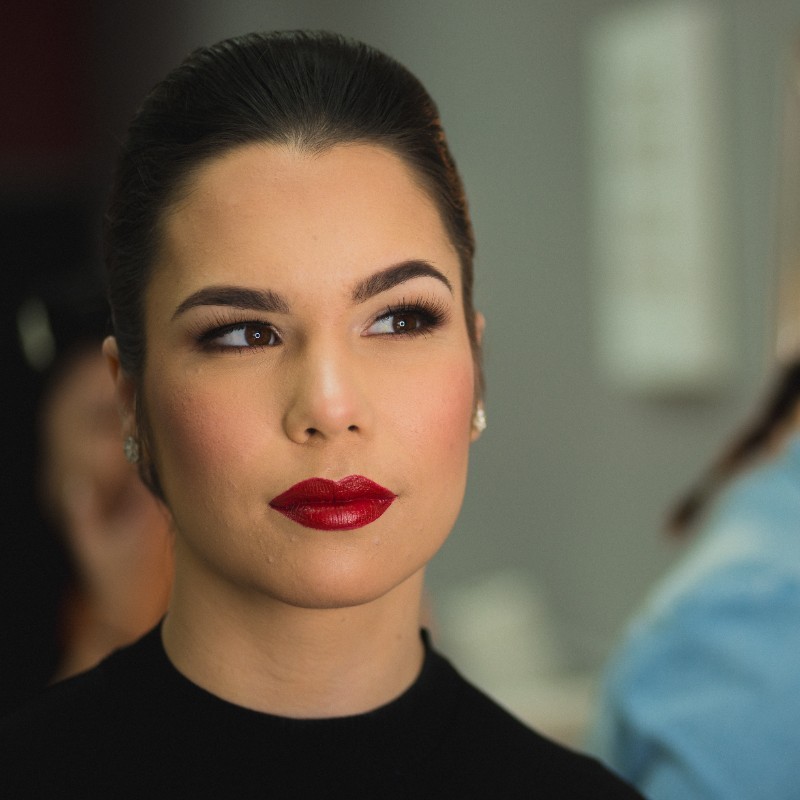Traditions of Mexico's Día de los Muertos: Mexico Vacation
By Amanda Mesa | Published on March 22, 2022
Mexico's rich culture is filled with fascinating folktales, unique traditions, and vibrant festivities. One of the country's most popular celebrations is Día de los Muertos, or "Day of the Dead." Even if you aren't familiar with the holiday's origins, customs, and cultural significance, you've likely seen photos of this lively and colorful occasion. While different towns and regions have their own unique ways of celebrating the Day of the Dead, during your holiday travels you'll find that its main traditions remain largely unchanged across the country.
Planning a Mexico cruise vacation around this special time of year or just interested in learning more about the holiday itself? Here's everything you need to know about Day of the Dead celebrations and where best to experience them when you visit Mexico.
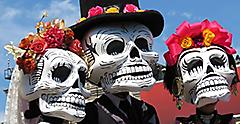
What And When Is The Day Of The Dead?
Day of the Dead is a two-day celebration honoring ancestors and the natural cycle of life and death. In Mexico, it takes place every year on Nov. 1 and 2. In its current form, the holiday has been celebrated for centuries — though its roots stretch back several thousand years.
For the ancient people of Mexico and Central America, life and death went hand in hand. They believed that, after death, souls had to journey through nine levels in the underworld in order to reach their final resting place. During the month of August, people used to leave offerings on altars and graves to help make this journey easier for their deceased relatives.
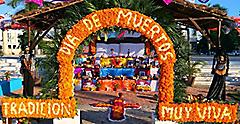
Book Now
How Is Dia De Los Muertos Celebrated?
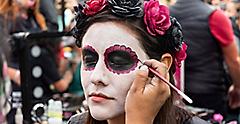
One of the oldest and most common practices during Día de los Muertos celebrations is to set up and decorate ofrendas, or altars, with the photos and keepsakes of loved ones who have passed away. Altars are erected in private homes, and many communities will also set up public altars in town squares and other open spaces. In addition to family mementos, the altars are decorated with sugar skulls, marigolds, a corn liquor called atole, and other symbolic offerings.
During Día de los Muertos, it's common for people to paint their faces like skulls. They'll also often dress up as skeletons or popular folk characters that have become a big part of this holiday over time. One notable figure locals like to impersonate is La Calavera Catrina, created in the early 20th century by the Mexican cartoon illustrator and printmaker, José Guadalupe Posada.
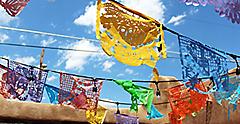
It's also popular for Mexican towns to string up banners of colorful, intricately cut paper — called papel picado — over the streets during Day of the Dead festivities. Though these pretty squares of paper are a fixture at most Mexican celebrations including weddings and birthdays, they've become especially symbolic of the Day of the Dead. During this time, they're usually cut with little skulls or marigolds.
While traveling on vacation to celebrate this holiday you may notice that its culture and traditions involve many symbols of death, though it isn't a time for grief. Mexico's Day of the Dead is a celebration that includes plenty of dancing, drinking, and feasting. Many believe the borders between the physical and spiritual worlds are at their weakest during this time of the year, creating a brief window for the dead to celebrate with their loved ones.
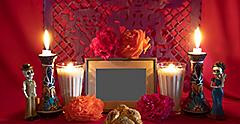
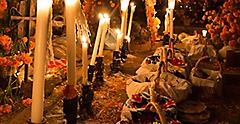
Where In Mexico Is Day Of The Dead Celebrated?
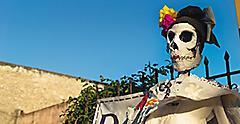

However, few Day of the Dead celebrations can top Mexico City's version, which can sometimes last an entire week. Its parade, the Desfile de Dia de Muertos, is iconic. Visitors and locals alike will also come together in the city's Plaza del Zócalo, where performers dazzle the crowd dressed as mythical creatures and skeletons.
Now that you have some background on Mexico's Day of the Dead and where to experience it first-hand, it's time to start planning your Mexico cruise vacation. Whether you choose to participate in the costumes and pageantry or just observe the local traditions, being in Mexico around this holiday is a truly unforgettable experience. Whatever region you choose to visit, make sure to immerse yourself in the sights, sounds and festivities of this joyous occasion.

